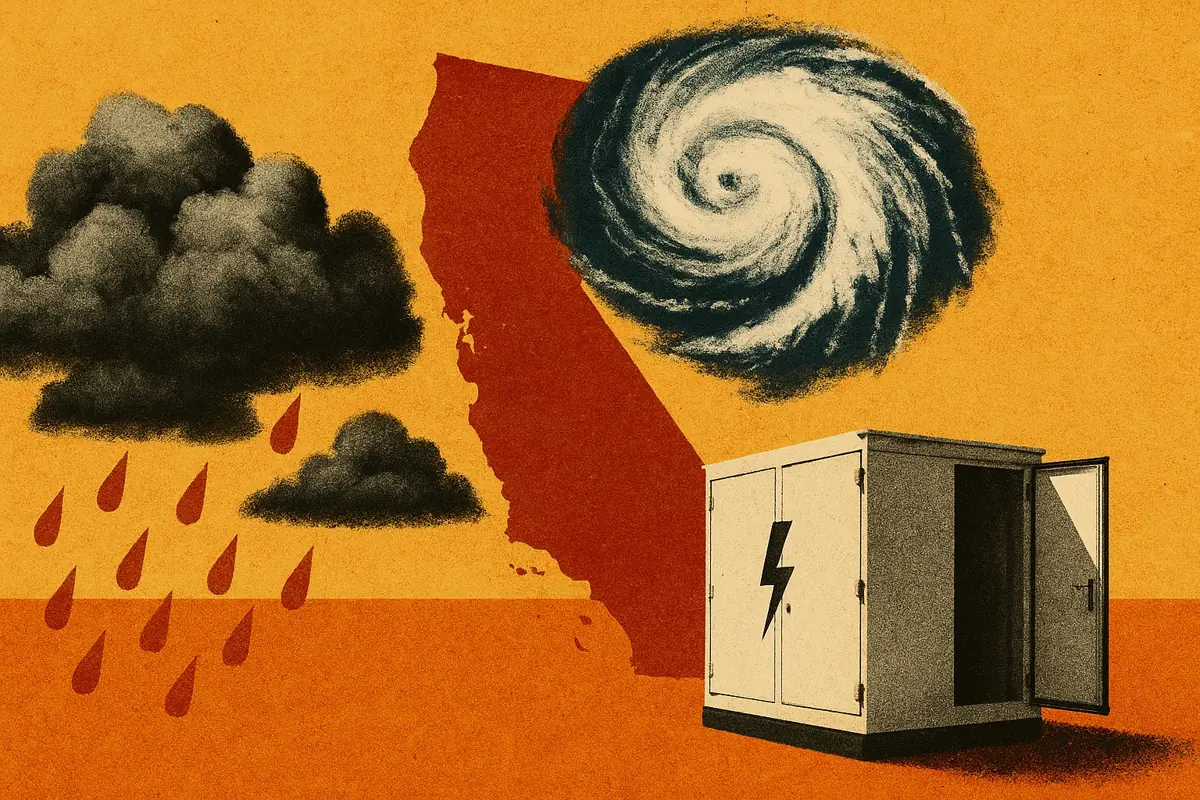Executive Summary
Texas (Electric Reliability Council of Texas (ERCOT)) is fast becoming the epicenter of battery energy storage investment. But with rapid market evolution comes growing complexity: volatile prices, shifting nodal dynamics, and uncertainty about where—and how—battery energy storage systems (BESS) will make money over the long term.
At Modo Energy, we’ve built the ERCOT Nodal BESS Revenue Forecast to help our customers tackle this complexity head-on. It’s a comprehensive, site-specific revenue model that simulates how battery projects perform across the ERCOT system from now until 2050—down to the node, and at a 15-minute resolution.
Most importantly, we put battery model directly in your hands. Control the inputs. Run the simulations. Explore outcomes across our Central, Low, and High world-views. No more relying on consultants or waiting on PDFs. It’s all here—at scale, at speed, and with full transparency.
Why ERCOT, Why Now?
ERCOT is uniquely suited to storage. It’s price-volatile. It has high renewable penetration. It’s experiencing a step change in load. And it’s one of the few markets globally where merchant battery projects have proven their value.

But it’s also hard to model. Price formation in ERCOT is local—driven by transmission constraints, scarcity conditions, and evolving dispatch patterns. And when you’re developing or investing in batteries, those locational nuances are everything.
That’s why we built this forecast. Not just to answer “how much will a battery make?”—but to provide clarity on where, when, and why value emerges in ERCOT, across every market and every node.
Three Reasons This Forecast Changes the Game
1. The Model is in Your Hands
We don’t just deliver a result—we deliver the model. You can simulate your own site-specific battery configuration, set your operational constraints, and run it across Modo-approved future scenarios. Whether you’re testing a 2-hour system in West Texas or a 4-hour project near Houston, the revenue stack is calculated and optimized for your inputs.
Better yet, you can do this repeatedly, across multiple locations and scenarios, at the click of a button. That means faster investment decisions, better internal alignment, and deeper strategic insight.
2. It’s Built on Serious Engineering
Under the hood is a sophisticated model built up from fundamental power flow physics. It includes:
- Over 5,000 nodes and 7,500 transmission lines modeled
- Hourly day-ahead and 15-minute real-time pricing
- All major revenue streams, including energy and ancillary services
- Simulated battery dispatch for every individual site
- Unit commitment, scarcity pricing, and optimal power flow
This isn’t an extrapolation. It’s a full fundamentals-based simulation of how ERCOT will behave in the future—how it commits generators, clears prices, and handles transmission constraints.
At its heart is a production cost model that replicates ERCOT market behaviour under different system conditions. Layered on top is a BESS dispatch engine that maximises project revenue at each site.
3. Full Transparency, Zero Black Boxes
At Modo, we believe credibility comes from clarity. That’s why the ERCOT Nodal BESS Revenue Forecast is built to be fully transparent.
You can trace every assumption: from technology costs and fuel prices, to system buildout, policy assumptions, and more. You can interrogate the methodology—how we model scarcity, how batteries respond to price signals, how grid constraints are enforced.
That’s because we know our users don’t just want answers. They want to understand the mechanics behind the numbers. And we believe that makes for better decision-making.
Technical Deep Dive: How the Forecast Works
What It Does
The service simulates the ERCOT power system from now until 2050, providing:
- Nodal energy price forecasts (day-ahead and real-time)
- Ancillary service market revenues (regulation, responsive reserve, etc.)
- Site-specific BESS revenue simulations, optimised for project constraints
- Sensitivity analysis across Central, Low, and High world-views
What It’s Built On
At the system level, the model uses a fundamentals-based production cost framework. It’s not just an extrapolation of the past—it builds up from physics, economics, and policy to simulate future market behaviour.
The engine includes:
- 1,000 generators
- 5,000+ network nodes
- 7,500+ transmission lines
- Optimal power flow algorithms
- Scarcity pricing and unit commitment

At the project level, the BESS dispatch model simulates optimal operations for each storage site, balancing:
- Arbitrage opportunities in day-ahead and real-time markets
- Participation in ancillary service markets
- Round-trip efficiency and degradation constraints
- Site-specific operational characteristics (duration, power rating, etc.)
The result is a high-resolution revenue forecast tailored to your node and battery:

What It’s For
- Investors can quantify long-term revenue potential and risk at individual nodes
- Developers can assess site selection, dispatch strategies, and system constraints
- Operators can simulate dispatch and market participation for specific configurations
- Analysts can explore how revenue stacks evolve across ERCOT under different futures
Aligned with Real-World Revenues in ERCOT
The ERCOT Nodal BESS Revenue Forecast is built leveraging all of Modo Energy’s expertise:
Calibrated against the ME BESS ERCOT
The forecast isn’t built in isolation. It’s continuously benchmarked against Modo Energy’s ERCOT BESS Index—our proprietary dataset of real battery revenues across the ERCOT market. This calibration loop ensures that the simulated revenue performance aligns with what batteries are actually earning at the nodal level today. It gives users confidence that the model doesn’t just work on paper—it reflects real-world outcomes.By anchoring the forecast to actual operating results, we bridge the gap between theoretical modelling and commercial performance—providing a forecast that’s not only detailed and transparent, but also proven.
Powered by the Modo Energy Research Team
Our in-house Research team plays a critical role in ensuring the forecast reflects the latest market dynamics. From tracking ERCOT policy changes and regulatory updates to analyzing transmission developments and project pipelines, they feed the model with continuously updated, best-in-class inputs.The team curates a wide range of public and proprietary data sources to maintain an accurate view of ERCOT’s evolving power system—across generation mix, demand profiles, fuel pricing, and more. Their work ensures the forecast remains grounded in current market conditions while looking decades ahead.
Conclusion: ERCOT, Unlocked
The ERCOT market is complex. That complexity is growing. With the ERCOT Nodal BESS Revenue Forecast, Modo Energy gives you the tools to decode that complexity. You get speed, scale, and transparency. You get a model you can trust—and control.
Most importantly, you get answers that are tailored to your project, your assumptions, and your strategy.
ERCOT is where battery energy storage will most rapidly transform the grid. This is how you stay ahead of it.
Available now in the Modo Energy Terminal. Run your first simulation today.







